The Ottawa group was extremely fortunate to have Master Chen traveling halfway around to world to provides us with hands on training in the Practical Method. In previous seminar I have written about the importance of direct transmission in the traditional martial arts. This seminar made me appreciate the importance of being on the receiving end of a technique from Master Chen. In addition, I realize that hearing the words and being in the presence of the teacher is just as important. As any of Master Chen’s student will attest, not only does Master Chen have ways with words but his words also has ways. Special thanks to Iron X fitness for the use of their facilities and Kelvin from Chen Style Taijiquan Practical Method Toronto for helping with the seminar. Kelvin also provided an excellent summary of the workshop here. An additional note of appreciation to the Ottawa Chinese Taichi Association for their continual support. The following are my personal summary.
Introduction to the Practical Method
There are always a variety of participants with a diverse background that attends a workshop. Each participant have different exposure to the Taijiquan and to the Practical Method system of training. Master Chen provided the following summary of Practical Method to help participants understand what we are trying to do in this system.Taijiquan as a system was originally developed so that one can
1. Learn to fight
This system continues as
2. Tradition (symbolic)
Now, we train as a form of
3. Exercise / Fitness
What differentiates the Practical Method from other systems is an emphasis on the
4. Importance to stretch. However, within the Practical Method system, stretch does no mean flexibility or using power.
What is a stretch then? According to this system,
5. The ingredients for a stretch is a fixed point and a moving point. A stretch is when there is a relationship between the two points. In other words, a stretch is two points with a clear relationship.
In the Practical Method, a stretch is accomplished by
6. Applying the Taoist Theory of Yin / Yang. Yin is a fixed point, Yang is a moving point. A stretch is accomplish by establishing a relationship between the Yin and the Yang. In order for the stretch to be effective, the action must “Get rid of” or “let go of” whatever that is in between the Yin and the Yang. Once such conditions are met then you have stretch. In direct terms, the middle has to let go and is not involve in the action.
In the Practical Method, the focus is on
7. the physical part, that is correct movement based on Principles. Other issues such as mental states or spiritual knowledge are not discussed.
A more detail explanation of the Practical Method Rules list can be found here.
Stay on task
In a previous seminar, I have written about the difficulty in quelling the Monkey Mind ((xinyuan; “心猿”). ). Each student in the Practical Method bring with them their own experience and expertise that often hinders their progress. Master Chen offers the following advice to help the student stay focus on the task at hand during the learning process. Master Chen suggests that when your teacher is teaching a lesson, there are only three relevant questions that you should ask. The questions are:
1. I did not hear. (Can you say it again?)
2. I cannot see. (Can you do it again?)
3. I did not understand the action. (Can I feel (experience) the action?)
and one important condition:
4. Never bring another thing in the equations. (as an example please reflect on the dilemma posed by the “Question of the kua?” )
Achieving success through the Practical Method
There are many obstacles in the study of Taijiquan. Among them include cultural barriers and an Taoist philosophy. The teachings method for the Practical Method is based on Traditional Chinese teaching systems. All actions in Taijquan is based on Taoist principles. Accordingly, the teaching can be described based on the adage ” you can do whatever you want as long as you do what I tell you.”To achieve success with The Practical method system of learning, obey the following steps:
1 – Teacher is right
2 – See “it”
3 – Hear “it”
4 – Understand “it”
5 – One right, all right (re calibration)
There are no short cuts. So do what you are told and assume it is real. This works in conjunction with the Duo system of learning from Master Hong as explained in Master Chen’s 2010 Edmonton seminar.
Levels of Taijquan proficiency
Grand master Hong once said there are nine levels of Taijiquan proficiency, Master Chen described the following three levels as:
1 – A Dot. The Taiji practitioner understands and uses a dot.
2 – A Line. The Taiji practitioner understands and uses a line.
3 – Three Dimensions. The Taiji practitioner understands and uses the entire space around him.
Grand master Hong did not describe other levels and Master Chen has yet to encounter those higher levels. So levels beyond three are left unnamed. What is known is that Grand master Hong himself was beyond level three because Grand master Hong can bounce people away at will and still no one knows how he achieve such abilities.
Applications Tips and Strategies
Over the two day intensive seminar, many concepts, techniques and applications were discussed. I can only include the following excerpt that might be of use to the students of the Practical Method.
Master Chen Says:
- “Use the mind and intention to establish the action.”
- “Smoothness is from accuracy. Smoothness is not a quality but movement without deviations.”
- “Smooth movement – means there is no traffic jam.”
- “The Taoist philosophy is Wuji to Taiji and is all about sequences. ”
- “Good things has similarities.”
- “Size is big. 360 degree big. In the beginning, work on size. Then work on rotation.”
- “You can use a pinch to interrupt your opponent’s power.”
- “One technique can solve all problems.”
- “Work on Foundations. Afterwards, work on “Timing, Angle and Speed.”
Winter in Ottawa
Another year has nearly passed. I hope everyone had a great and rewarding time training in Taijiquan. A few closing words until the next seminar.
果欲结金兰。If you wish to make a good friend,
但看松柏林。 Just look at the pine and cypress woods.
经霜不堕地。 Amid the frost, they do not fall to the ground,
岁寒无异心。Faithful even when the year is cold.
子夜四时歌冬歌 Midnight Song of the Seasons: Winter Song
(南朝乐府) (Southern Dynasties Music)

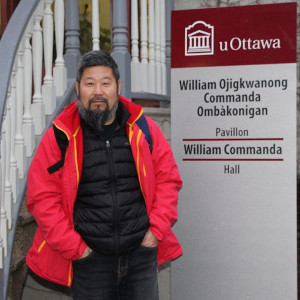
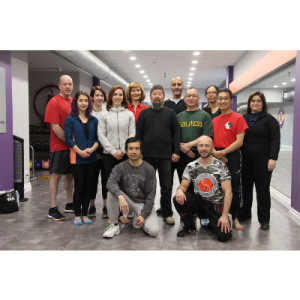
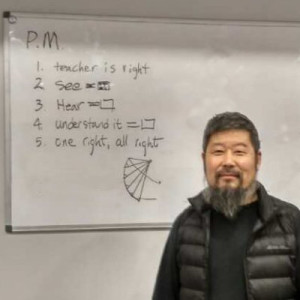
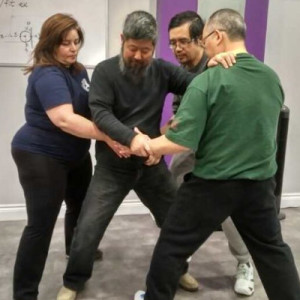


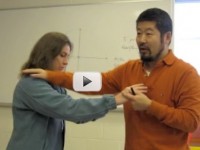
{ 2 comments… read them below or add one }
Excellent summary.
Thanks Ming also for helping out at the workshop and for taking detailed and copious notes.
Much appreciated.
Master Chen looking GOOD!